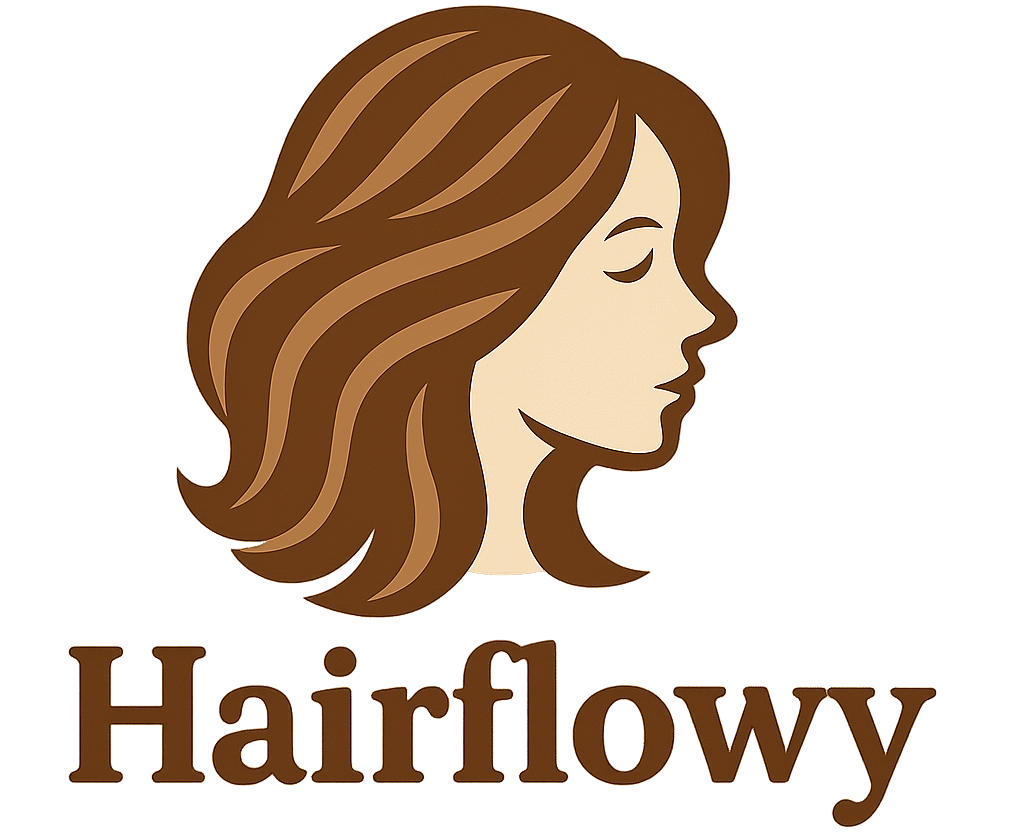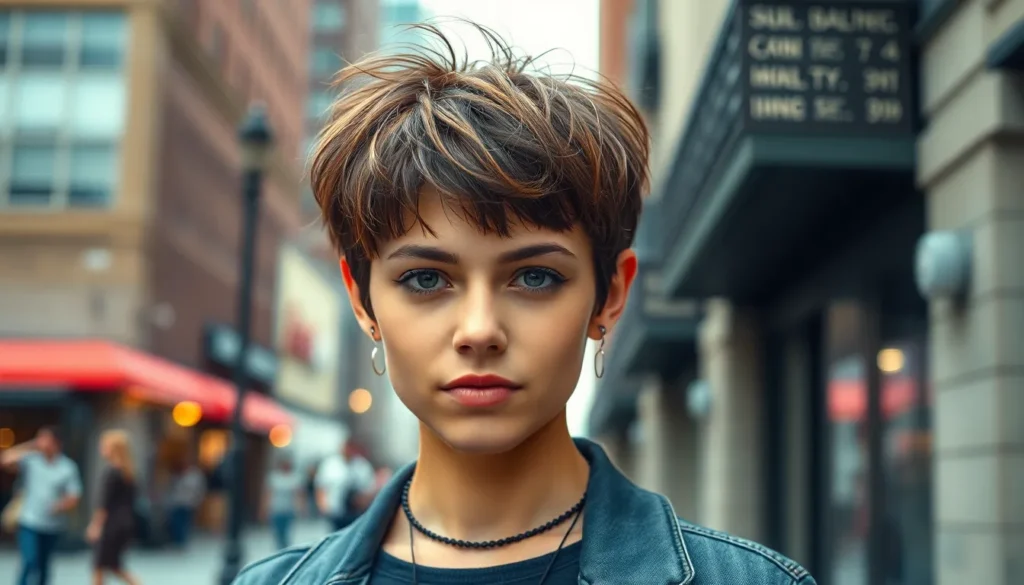The 90s pixie cut remains one of fashion’s most iconic and daring hairstyles that continues to inspire modern trends. We’ve watched this edgy short cut make countless comebacks since celebrities like Winona Ryder and Halle Berry first rocked these statement-making styles on red carpets worldwide.
What makes the 90s pixie so special? It’s the perfect blend of rebellion and sophistication that defined an entire decade’s aesthetic. From choppy layers to sleek minimalist cuts these styles offered women a bold way to express their individuality while embracing low-maintenance beauty routines.
Whether you’re considering your first major chop or looking to recreate that nostalgic 90s vibe we’ll guide you through everything you need to know about this timeless cut. Let’s explore how to adapt these vintage styles for today’s modern woman and discover why the 90s pixie cut deserves a permanent place in your style repertoire.
Classic 90s Pixie Cut Icons Who Defined the Decade
Several influential actresses transformed the pixie cut from a simple short hairstyle into a cultural phenomenon that defined an entire generation. These leading ladies proved that going short could be both rebellious and feminine.
Winona Ryder’s Edgy Tousled Style
Winona Ryder revolutionized the pixie cut with her deliberately messy, tousled approach that perfectly captured the grunge aesthetic of the early 90s. Her choppy layers and piece-y texture created an effortlessly cool vibe that looked like she’d just rolled out of bed after a late night at a concert venue.
We love how Ryder’s pixie cut featured uneven lengths and strategic face-framing pieces that added movement and dimension. The dark brunette color enhanced the edgy appeal while maintaining enough softness to complement her delicate features. This textured approach became the blueprint for countless women seeking an alternative to polished Hollywood glamour.
Meg Ryan’s Layered Romantic Look
Meg Ryan brought a softer, more romantic interpretation to the 90s pixie cut that perfectly matched her girl-next-door persona in romantic comedies. Her blonde, heavily layered style created volume and bounce that moved beautifully on camera while maintaining an approachable, feminine appeal.
The key elements of Ryan’s signature look included multiple layers throughout the crown area and longer pieces around the face that created a flattering frame. We admire how her stylist used strategic highlighting to add dimension and brightness that made the cut appear fuller and more ever-changing. This approach proved that pixie cuts could be both playful and sophisticated without sacrificing femininity.
Halle Berry’s Sleek and Sophisticated Cut
Halle Berry elevated the pixie cut to red carpet elegance with her precisely styled, sleek interpretation that showcased impeccable bone structure and timeless sophistication. Her version featured clean lines, minimal texture, and a polished finish that proved short hair could be just as glamorous as long locks.
Berry’s pixie cut emphasized geometric precision with tapered sides and a slightly longer top section that could be styled smooth or with subtle waves. We appreciate how her deep side part and face-framing pieces created asymmetrical interest while maintaining overall balance. This refined approach influenced countless women to embrace shorter styles as a symbol of confidence and modern femininity.
Essential Features That Made 90s Pixie Cuts Unique
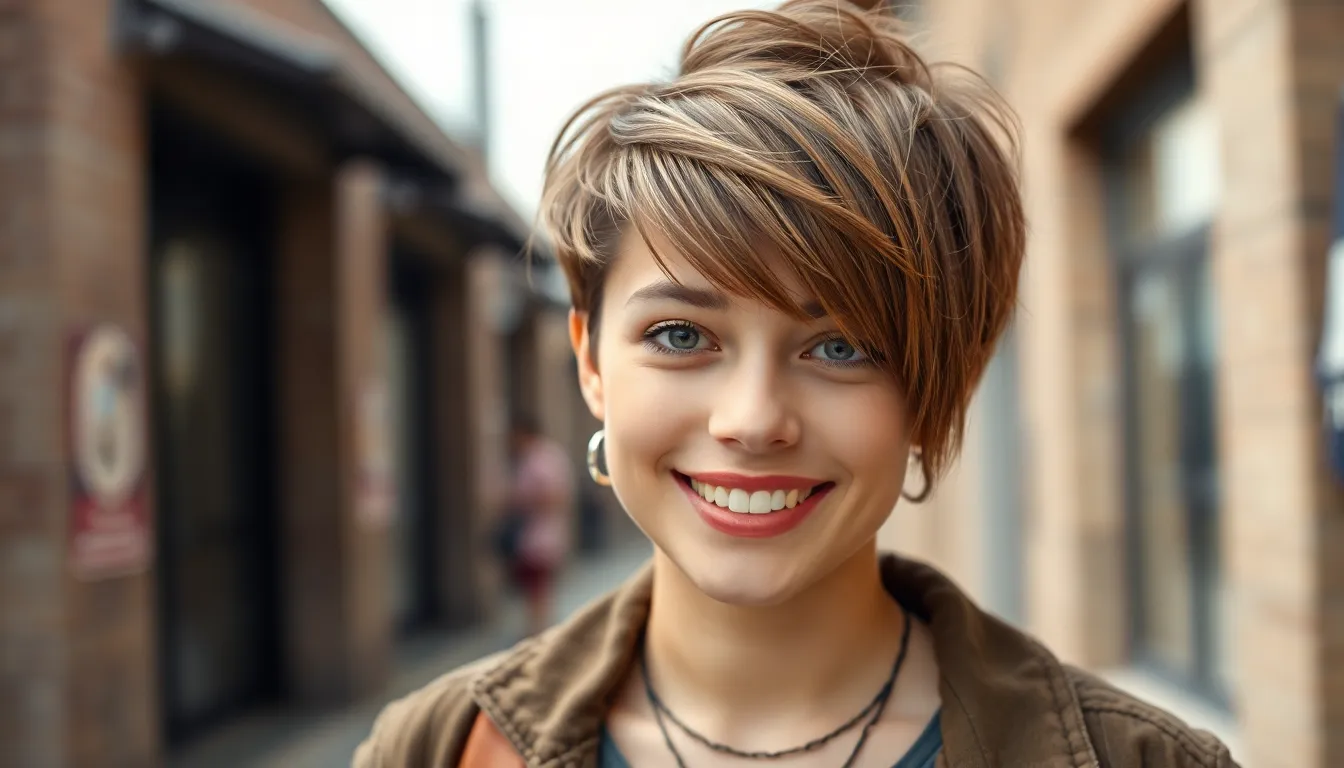
The 90s pixie cut stood apart from previous decades with its sharp, edgy, and highly textural appearance. We’ll explore the three defining characteristics that made this era’s pixie cuts unmistakably distinctive and rebellious.
Choppy Layers and Textured Ends
Choppy, uneven layers defined the quintessential 90s pixie cut, creating volume and a wild, playful texture that embodied pure rebellion. Stylists deliberately crafted these cuts to look less tidy than classic pixie styles, perfectly capturing the grunge movement’s anti-establishment spirit. Point cutting techniques enhanced the hair’s natural movement while delivering that coveted rugged, lived-in appearance. We see this textural approach as the foundation of what made 90s pixies so instantly recognizable and effortlessly cool.
Face-Framing Side-Swept Bangs
Longer, side-swept bangs became the perfect complement to the 90s pixie’s edgy foundation, softening the dramatic short length while adding incredible versatility. Celebrities like Winona Ryder and Drew Barrymore popularized this face-framing feature, showing how it balanced femininity with the cut’s rebellious attitude. These strategically placed bangs offered multiple styling options, allowing wearers to switch between sweet and edgy looks effortlessly. We recognize this feature as crucial for making the bold pixie cut more universally flattering and wearable.
Asymmetrical and Uneven Lengths
Asymmetry emerged as the defining hallmark of 90s pixie cuts, with uneven lengths throughout the top, sides, and back creating bold visual interest. Stylists often left the top section much longer and more textured than the sides, producing a modern statement that felt fresh and unconventional. This deliberate unevenness set 90s pixies apart from their predecessors while embracing the decade’s celebration of individuality and non-traditional beauty standards. We view this asymmetrical approach as the ultimate expression of 90s hair rebellion, making each cut uniquely personal and striking.
Popular 90s Pixie Cut Variations Every Woman Wanted
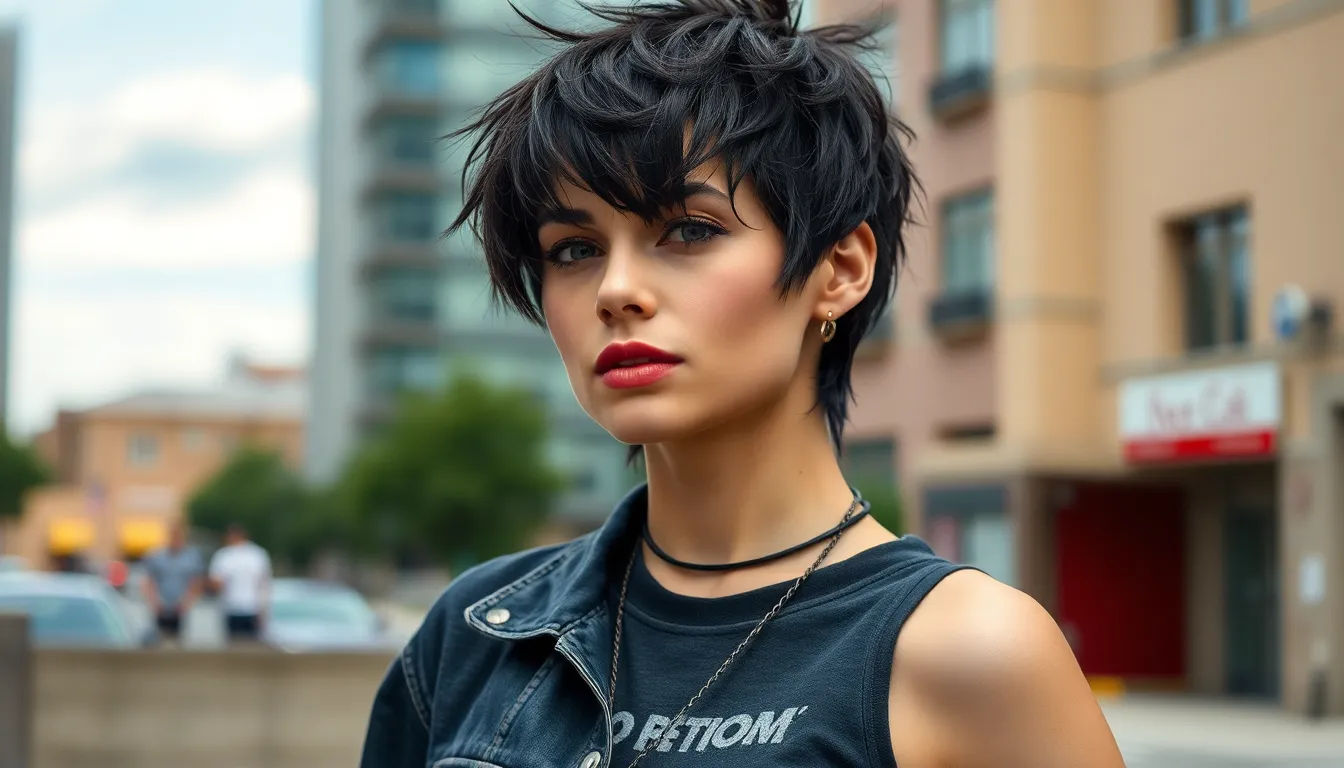
The decade’s most coveted short hairstyles came in three distinct variations that captured different aspects of 90s culture. Each style reflected the era’s diverse aesthetic preferences and social movements.
The Grunge-Inspired Messy Pixie
Winona Ryder’s dark, tousled pixie became the defining look of 90s grunge culture. Her effortlessly messy style rejected traditional beauty standards and embraced an undone aesthetic that resonated with the decade’s anti-establishment spirit. Choppy layers created natural texture while deliberately unkempt styling conveyed rebellion and nonconformity.
Styling this look required minimal effort but maximum attitude. Women achieved the grunge pixie by scrunching damp hair with texturizing products and allowing it to air dry for that perfectly imperfect finish. Dark hair colors like deep brown and black enhanced the edgy, punk-infused appearance that made this variation so iconic.
The Polished Corporate Professional Cut
Corporate women embraced sleek, tapered pixie cuts that balanced femininity with professional authority. This polished variation featured clean lines and structured styling that conveyed confidence in boardrooms and business meetings. Smooth, well-groomed layers created a sophisticated silhouette that challenged traditional workplace beauty expectations.
Professional styling techniques emphasized precision and neatness over rebellion. Blow drying with round brushes and finishing with light-hold products created the polished look that empowered women breaking glass ceilings throughout the decade. This variation proved that short hair could be both powerful and elegant in corporate environments.
The Punk Rock Spiky Style
Sharp, textured spikes defined the most rebellious 90s pixie variation. This aggressive styling approach used heavy gels and waxes to create dramatic height and separation between individual hair sections. Bold colors and extreme textures made this style a statement piece for women wanting to express their individuality.
Achieving punk spikes required strong-hold products and fearless attitude. Styling gel applied to damp hair and worked through with fingers created the signature spiky texture that defied gravity and convention. This variation appealed to those seeking maximum impact and expressive freedom through their hairstyle choices.
Styling Products That Defined 90s Pixie Cut Maintenance
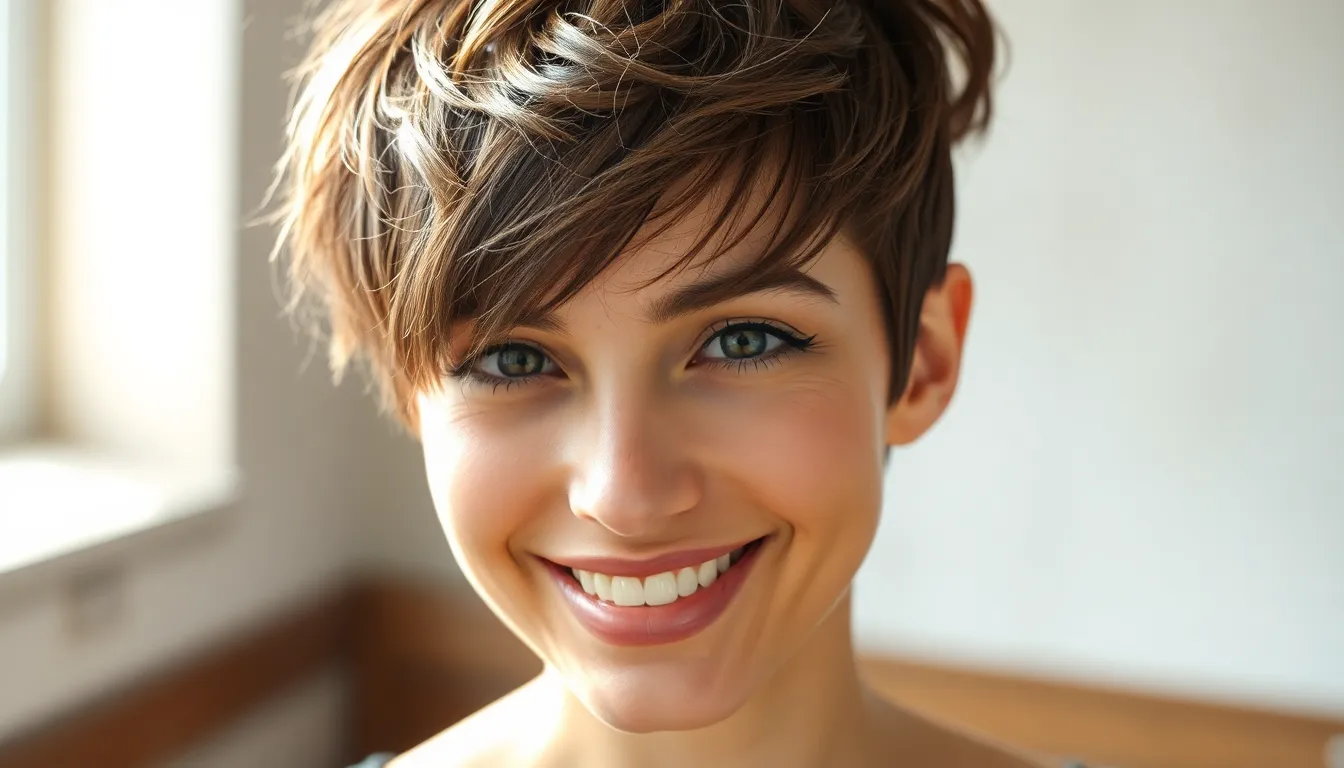
Achieving the perfect 90s pixie cut required exact styling products that created the decade’s signature blend of texture and movement. We’ll explore the essential products that helped icons like Winona Ryder and Halle Berry maintain their legendary looks.
Hair Wax and Pomade for Texture
Wax became the cornerstone product for creating the tousled, piecey texture that defined 90s pixie cuts. Pomade offered similar benefits while providing more shine and definition to individual strands. These products allowed stylists to shape and sculpt hair without creating weight or stiffness.
Texture creation was crucial for achieving that cool, lived-in feel celebrities showcased on red carpets. Wax enabled the separation of hair strands to create dimension and movement. Modern recreations of these looks still rely on similar formulations to capture the authentic 90s aesthetic.
Volumizing Mousse for Lift
Mousse provided the essential lift needed to prevent pixie cuts from appearing flat against the head. Lightweight formulations added body at the roots while maintaining the airy, feathered silhouette characteristic of the era. Root volume became particularly important for shorter lengths that could easily lose their shape.
Application techniques focused on distributing mousse evenly through damp hair before styling. Volume enhancement helped create the dimensional look that separated 90s pixies from their more structured predecessors. Professional stylists relied on mousse to build the foundation for layered, textured cuts.
Hairspray for Hold and Structure
Flexible hairspray secured the tousled style while allowing natural movement throughout the day. Hold became essential for maintaining the unstructured appearance that still required subtle control. Celebrities like Florence Pugh and Zoë Kravitz continue using similar techniques for their modern interpretations.
Strategic application prevented stiffness while preserving the cut’s shape and texture. Structure maintenance required products that could adapt to hair’s natural movement patterns. Professional-grade hairsprays offered the perfect balance between hold and flexibility for achieving authentic 90s pixie styling.
Face Shapes That Looked Best With 90s Pixie Cuts
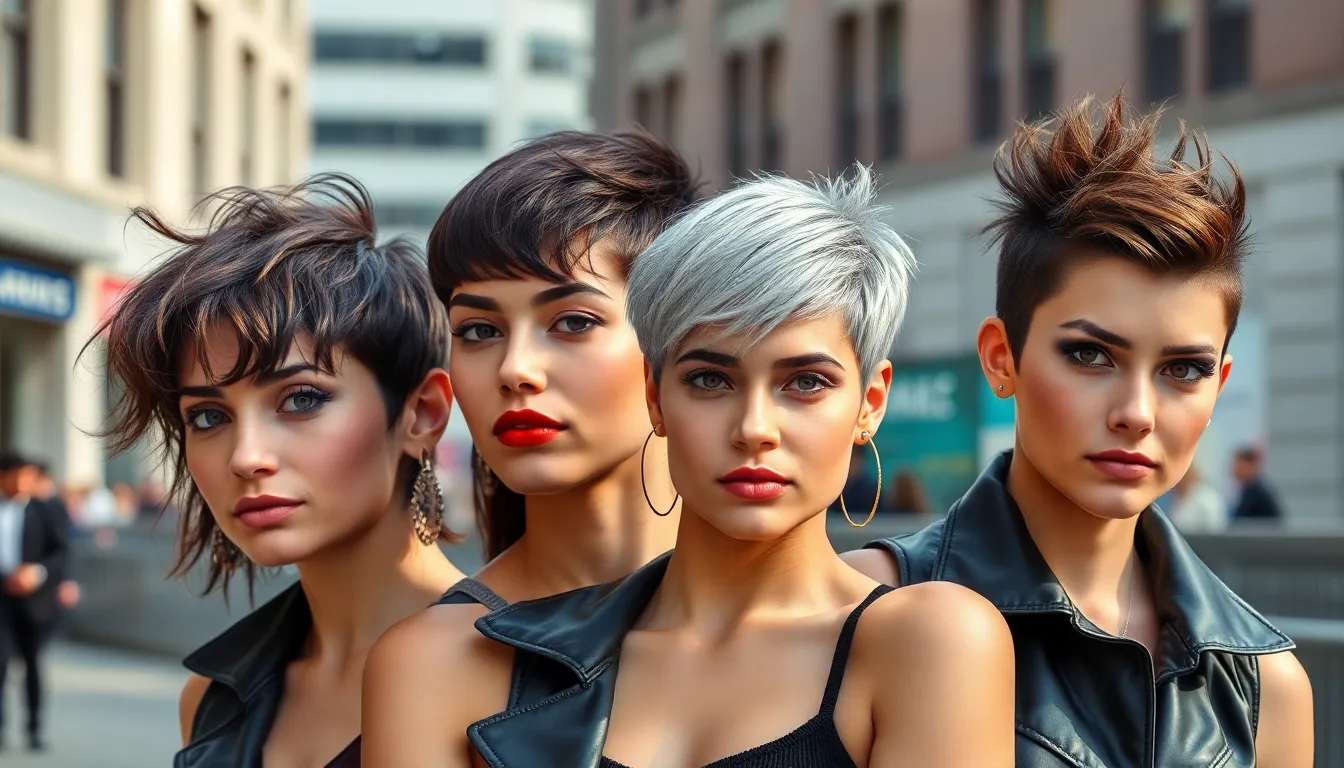
Different face shapes showcased the edgy sophistication of 90s pixie cuts in unique ways. We’ll explore which facial structures complemented this iconic decade’s most rebellious hairstyle.
Oval Faces and Balanced Proportions
Oval faces represented the ideal canvas for 90s pixie cuts due to their naturally balanced proportions. We found that women with oval face shapes could effortlessly pull off both delicate and sharp pixie variations without overwhelming their features. Classic proportions allowed these faces to showcase the choppy layers and textured ends that defined the decade’s aesthetic.
Versatility became the key advantage for oval faced women experimenting with 90s pixie styles. They could seamlessly transition from Winona Ryder’s grunge inspired tousled look to Halle Berry’s polished red carpet elegance. Balanced facial dimensions meant that dramatic asymmetrical cuts and bold side swept bangs enhanced rather than competed with their natural harmony.
Heart-Shaped Faces and Delicate Features
Heart shaped faces discovered that 90s pixie cuts beautifully emphasized their delicate bone structure and refined features. Broad foreheads and temples paired with narrower chins created the perfect framework for showcasing the decade’s signature face framing elements. We observed how the longer front sections of pixie cuts softened the broader upper portion while drawing attention to elegant jawlines.
Strategic layering around the temples helped balance the wider forehead characteristic of heart shaped faces. Stylists frequently incorporated longer side swept bangs that grazed the cheekbones, creating visual harmony between the upper and lower portions of the face. This approach allowed heart shaped women to embrace the rebellion of 90s pixie cuts while maintaining their naturally feminine appeal.
Angular Jawlines and Strong Bone Structure
Angular jawlines and prominent bone structure found their perfect match in the bold geometry of 90s pixie cuts. We discovered that strong facial architecture could handle the dramatic contrast between short back and sides with longer textured tops. Sharp cheekbones and defined jaw angles actually enhanced the edgy aesthetic that made these cuts so iconic during the grunge era.
Women with angular features could embrace the most daring 90s pixie variations, including punk rock spiky styles and heavily asymmetrical cuts. Their bone structure provided the necessary foundation to support bold styling choices like dramatic side parts and choppy textured layers. Strong jawlines complemented the rebellious spirit of the decade while showcasing the confidence that pixie cuts demanded.
Modern Ways to Recreate Authentic 90s Pixie Cuts Today
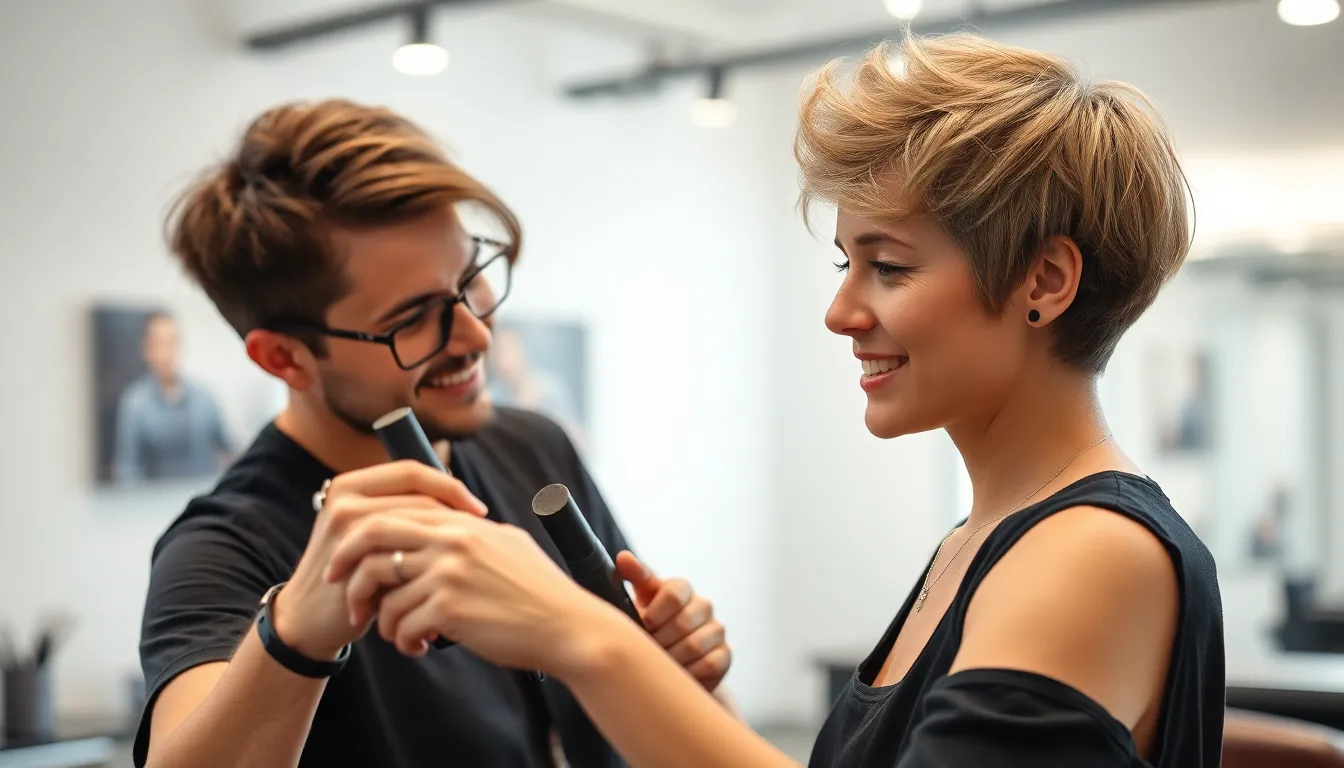
We’ve discovered that today’s hairstylists have revolutionized the classic 90s pixie cut using advanced techniques and modern tools. These contemporary approaches allow us to achieve that iconic rebellious spirit while adapting to current beauty standards.
Updated Cutting Techniques for Contemporary Looks
Precision point cutting transforms the traditional pixie by creating soft, textured ends that feel modern yet authentic. We recommend this technique because it maintains the classic 90s charm while adding a contemporary edge that works beautifully with today’s styling products.
Choppy layers combined with wolf pixie elements deliver that bold, edgy appearance we associate with 90s rebellion. This cutting method incorporates wild, untamed textures that mirror the original grunge aesthetic while offering more versatility for different hair types.
Razor cutting methods provide the ultimate solution for achieving those signature textured ends. Professional stylists use razors to create subtle variations in length that capture the authentic 90s feel without looking dated.
Longer textured layers on top enhance volume and movement in ways that weren’t possible with older cutting techniques. We’ve found that this approach works particularly well for creating the Christy Cut style, which blends sharp lines with soft femininity.
Subtle layering techniques offer a less choppy alternative to the original 90s versions. These methods allow us to achieve that iconic pixie structure while maintaining a more refined appearance that suits contemporary lifestyles.
Styling Tools That Weren’t Available in the 90s
Advanced hair dryers with temperature and speed controls revolutionize how we style pixie cuts today. These tools provide faster drying times and better texture control than anything available in the 90s, allowing us to recreate those iconic styles with precision.
Ceramic and tourmaline coated styling tools protect hair health while delivering superior results. We can now achieve the sleek, polished pixie looks of stars like Halle Berry using flat irons and curling tools that minimize damage and maximize shine.
Professional grade hair serums and oils maintain hair health in ways that weren’t possible decades ago. Products containing argan oil and keratin help us achieve that glossy finish while protecting against heat damage from styling tools.
Precision trimming tools allow for detailed work on pixie cuts that creates sharper lines and better texture. These specialized scissors and razors give us the ability to recreate exact 90s silhouettes with modern accuracy.
Color Trends That Complement Vintage Pixie Styles
Earthy neutral shades like chestnut brown and honey blonde perfectly complement the classic pixie aesthetic. We’ve observed that these colors enhance the natural texture of layered cuts while maintaining that authentic 90s vibe.
Strategic highlight placement creates depth and dimension that wasn’t commonly achieved in the original decade. Subtle highlights and shadow roots add visual interest to pixie cuts while preserving their timeless appeal.
Bold color accents offer a modern twist on the punk rock pixie variations. We can now achieve vibrant colors that last longer and look more natural than the temporary options available in the 90s.
Natural looking color gradients enhance the choppy layers and textured ends that define authentic pixie cuts. These coloring techniques work particularly well with the wolf pixie style, creating movement and visual depth throughout the cut.
Maintenance Tips for Keeping Your 90s Pixie Cut Fresh
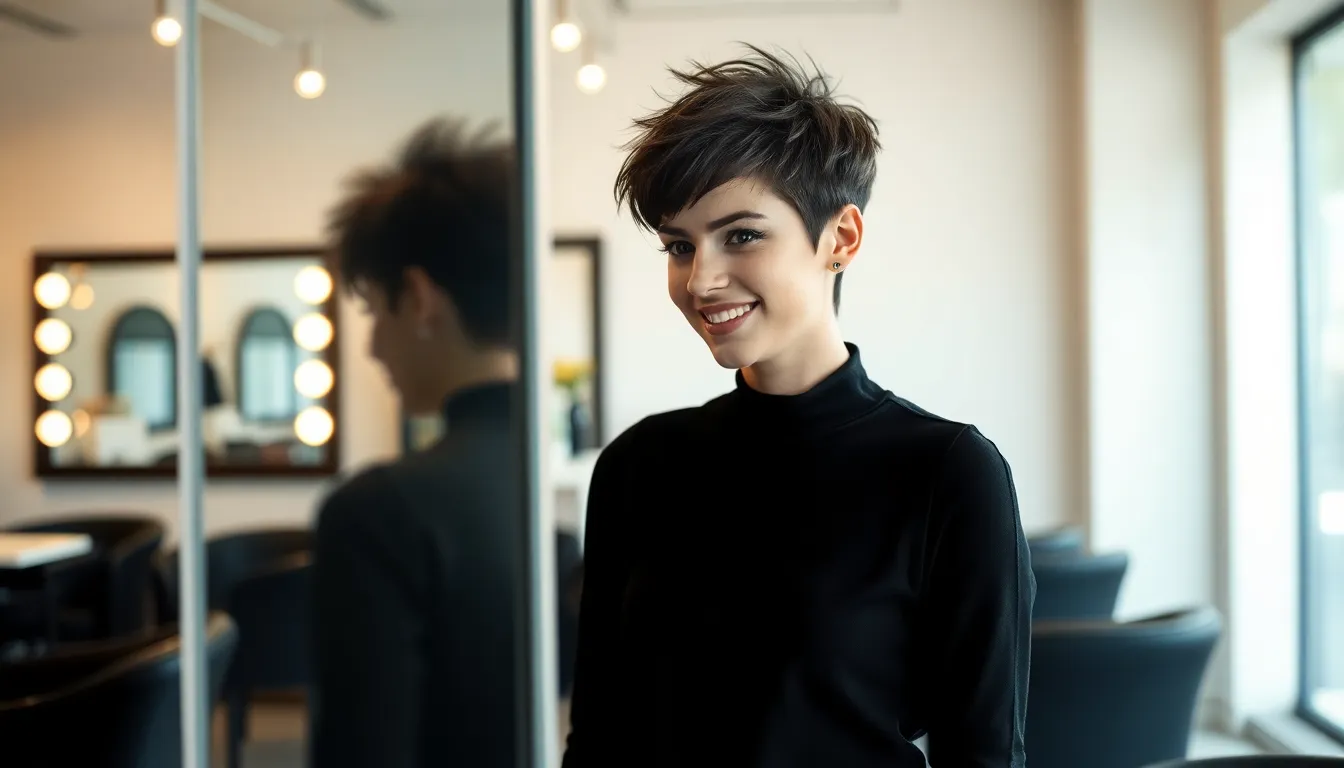
Maintaining that authentic 90s pixie cut requires consistent care and attention to preserve its iconic texture and shape. We’ll explore the essential maintenance strategies that keep your retro style looking fresh and true to its decade defining roots.
Frequent Trimming Schedules
Regular trims every six weeks are essential for maintaining the crisp lines and distinctive shape that define a 90s pixie cut. Professional stylists recommend this schedule because pixie cuts grow out quickly and lose their signature edgy structure without consistent maintenance.
Shape deterioration happens faster with shorter styles like the 90s pixie, making frequent visits to your stylist non negotiable. Between appointments, the carefully crafted layers that create that tousled, rebellious texture begin to blend together and lose their impact.
Growth patterns vary significantly among individuals, but most people notice their pixie cut losing its 90s character after about four to five weeks. Scheduling your next appointment during each visit ensures you maintain that fresh from the salon look that captures the decade’s bold aesthetic.
Daily Styling Routines
Natural texture enhancement forms the foundation of authentic 90s pixie styling, requiring exact products and techniques to achieve that effortlessly tousled appearance. We recommend using texturizing dust on dry hair to create the gritty, piece separation that defined the grunge inspired variations.
Hair oil application provides the polished finish needed for more sophisticated 90s pixie interpretations, particularly when recreating Halle Berry’s sleek red carpet style. Apply a small amount to damp hair before styling to achieve that glossy, controlled look.
Protective measures during sleep prevent breakage and maintain the softness essential for healthy pixie cuts. Using satin or silk pillowcases reduces friction that can damage the delicate shorter strands and disrupt your carefully styled texture.
Heat styling minimization protects hair integrity while preserving the natural movement that makes 90s pixie cuts so appealing. Embrace air drying techniques and finger styling to maintain that authentic, lived in texture without compromising hair health.
Professional Touch-Up Appointments
Consulting professionals before making important changes prevents costly mistakes that could compromise your 90s pixie cut’s integrity. Trimming the fringe or adjusting layers requires precision that only experienced stylists can provide while maintaining the style’s authentic character.
Customization consultations ensure optimal results by allowing stylists to adapt the classic 90s pixie elements to your exact hair type and face shape. This personalized approach guarantees that your vintage inspired cut flatters your features while staying true to the decade’s aesthetic.
Professional expertise becomes crucial when transitioning between different 90s pixie variations, such as moving from a grunge inspired messy style to a more polished corporate friendly version. Stylists understand how to modify the cut’s structure while preserving its essential 90s DNA.
Creative styling sessions with professionals can introduce new ways to accessorize and vary your pixie cut, including finger waves and other period appropriate techniques that enhance the style’s versatility.
Conclusion
The timeless appeal of 90s pixie cuts proves that some trends transcend decades. We’ve seen how this iconic hairstyle continues to inspire modern interpretations while maintaining its rebellious edge and effortless sophistication.
Whether you’re drawn to the grunge-inspired texture or sleek polished finish these cuts offer endless possibilities for self-expression. With the right styling techniques and regular maintenance your 90s pixie can become a signature look that’s both nostalgic and completely contemporary.
The beauty of this hairstyle lies in its adaptability—it works across different face shapes ages and personal styles. As we move forward the 90s pixie cut remains a powerful choice for anyone ready to embrace bold confident beauty that never goes out of style.
Frequently Asked Questions
What made the 90s pixie cut so iconic?
The 90s pixie cut became iconic due to celebrities like Winona Ryder, Halle Berry, and Meg Ryan who transformed it into a cultural phenomenon. It perfectly captured the decade’s rebellious spirit while offering versatility from grunge to sophisticated looks. The cut’s bold, edgy nature allowed women to express individuality while maintaining a low-maintenance beauty routine that fit the era’s aesthetic.
What are the key features of a 90s pixie cut?
The defining characteristics of 90s pixie cuts include choppy layers with textured ends for a wild, playful look, face-framing side-swept bangs that soften the dramatic cut, and asymmetrical lengths that emphasize individuality. These features created the signature rebellious texture while adding versatility and reflecting the decade’s non-traditional beauty standards.
Which face shapes work best with 90s pixie cuts?
Oval faces can effortlessly pull off various pixie styles due to their balanced proportions. Heart-shaped faces benefit from strategic layering and bangs that emphasize delicate features. Women with angular jawlines find that the bold geometry of pixie cuts complements their strong bone structure, allowing them to embrace the rebellious spirit of the style.
What styling products were essential for 90s pixie cuts?
Essential products included hair wax and pomade for achieving tousled, piecey texture, volumizing mousse for lift and preventing flatness, and flexible hairspray for hold while maintaining natural movement. These products worked together to create the signature 90s pixie look and continue to influence modern interpretations of the style.
How can I recreate a 90s pixie cut today?
Modern recreation involves advanced cutting techniques like precision point cutting and razor cutting to maintain original charm with contemporary edge. Use updated styling tools like advanced hair dryers and ceramic-coated tools for better results. Consider earthy color shades or strategic highlights to enhance texture and depth while staying true to the 90s aesthetic.
How often should I maintain my 90s pixie cut?
Regular trims every six weeks are essential to maintain the cut’s shape and structure. Daily styling should enhance natural texture using texturizing products and hair oils. Professional touch-up appointments help with precision adjustments and customization. Protective measures during sleep, like silk pillowcases, prevent damage and maintain the style’s integrity.
